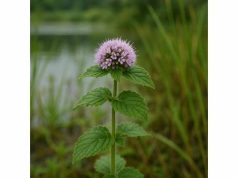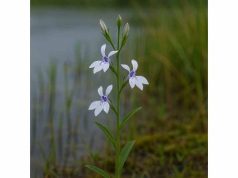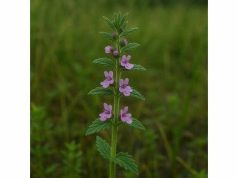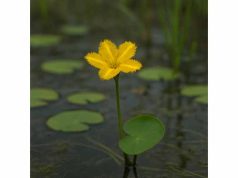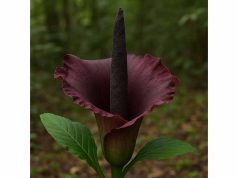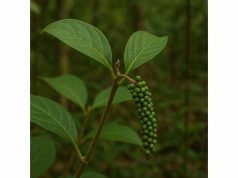
Vervain mallow (Phyla nodiflora), sometimes called creeping fogfruit, is a resilient perennial groundcover treasured for its soothing medicinal qualities and versatile applications. Packed with bioactive constituents—such as verbascoside, flavonoids, iridoid glycosides, and tannins—it delivers notable anti-inflammatory, antioxidant, and antimicrobial effects. Herbalists employ its leaves and stems in teas, tinctures, and topical poultices to ease digestive discomfort, calm nervous tension, support wound healing, and promote clear skin. Whether sipped as a mild infusion, applied as a cooling compress, or blended into salves, vervain mallow offers approachable, time‑honored relief for mind, body, and spirit care.
Table of Contents
- Botanical Overview and Distinguishing Features
- Phytochemical Composition and Principal Constituents
- Therapeutic Benefits and Fundamental Properties
- Practical Applications and Precautionary Guidelines
- Scientific Insights and Noteworthy Research
- FAQ
Botanical Overview and Distinguishing Features
Vervain mallow (Phyla nodiflora) is a creeping, mat-forming herb in the Verbenaceae family. Native to tropical and subtropical regions worldwide, it grows vigorously along moist banks, lawns, and disturbed soils. Its taxonomy places it within the order Lamiales, alongside other familiar medicinal herbs. The plant produces square stems that root at nodes, spreading horizontally and forming dense carpets often less than 10 cm tall.
Leaf and Stem Characteristics
Leaves grow opposite in clusters, measuring 1–3 cm long. They are ovate to lanceolate with finely serrated margins and a rough texture. A faint minty aroma emerges when crushed. The stems are slender but sturdy, featuring tiny rootlets at each node, enabling rapid groundcover establishment.
Floral Structure
Tiny, fragrant flower heads appear year-round in mild climates but peak from late spring through autumn. Each head comprises a disk of tubular florets surrounded by four-toothed bracts, clustered at stem tips. The coloration ranges from pale lavender to white, attracting bees, butterflies, and small pollinators. After flowering, the plant develops small, inconspicuous nutlets that facilitate seed dispersal.
Growth Conditions
- Soil: Prefers moist, well-drained soils but tolerates occasional flooding.
- Light: Thrives under full sun to partial shade; under heavy canopy, flowering diminishes.
- Temperature: Hardy in USDA zones 7–11; fails to survive extended frost without protection.
Ecological Role and Cultivation
Gardeners often value vervain mallow for erosion control, weed suppression, and as a living mulch. Its rapid, low-growing habit smothers weeds and retains moisture. Propagation is simplest via stem cuttings or by division—both root readily in moist conditions. Occasional trimming after flowering encourages fresh growth and prevents overrun of adjacent plants.
Beyond landscaping, traditional practitioners harvest vervain mallow’s aerial parts at peak bloom for maximum phytochemical potency. Leaves and stems are either used fresh or dried slowly in the shade to preserve delicate compounds, preparing them for teas, tinctures, or topical formulations.
Phytochemical Composition and Principal Constituents
Vervain mallow’s medicinal prowess stems from a rich chemical repertoire. Key active ingredients include:
- Verbascoside (Acteoside)
- A phenylpropanoid glycoside with robust antioxidant, anti-inflammatory, and neuroprotective properties.
- Scavenges free radicals, inhibits pro-inflammatory enzymes (e.g., COX‑2), and protects neural tissues from oxidative stress.
- Flavonoids (Apigenin, Luteolin, Quercetin)
- Powerful antioxidants that safeguard cells against oxidative damage.
- Apigenin and luteolin also exhibit mild anxiolytic actions by modulating GABA receptors, promoting calm without sedation.
- Iridoid Glycosides (Harpagide, Asperuloside)
- Provide anti-inflammatory and analgesic effects, dampening cytokine release and reducing pain signals.
- Harpagide contributes to joint comfort and digestive support.
- Tannins (Ellagitannins, Gallotannins)
- Astringent compounds that tighten tissues, reduce minor bleeding, and tone mucous membranes.
- Aid in wound contraction and protection against infection when applied topically.
- Mucilage
- Polysaccharides that form a soothing, protective film over irritated mucous membranes.
- Ideal for calming sore throats, digestive lining, and sensitive skin.
- Essential Oils (β‑Caryophyllene, Eugenol)
- Impart antimicrobial and mild analgesic properties. β‑Caryophyllene interacts with cannabinoid receptors to relieve discomfort; eugenol offers antiseptic benefits.
- Phenolic Acids (Caffeic Acid, Chlorogenic Acid)
- Enhance antioxidant capacity and support cardiovascular health by inhibiting LDL oxidation.
- Possess antimicrobial effects that complement tannins in topical applications.
- Minerals and Trace Elements
- Contains calcium, magnesium, iron, and potassium, supporting cellular function, bone health, and electrolyte balance.
This synergistic phytochemical ensemble explains why vervain mallow addresses multiple health concerns—from inflammation and oxidative stress to mucous membrane irritation and microbial challenges. Traditional extraction methods, such as gentle decoctions and tinctures with moderate alcohol content, optimize the yield of both water‑ and alcohol‑soluble constituents.
Therapeutic Benefits and Fundamental Properties
The diverse chemical profile of vervain mallow translates into wide-ranging health benefits:
- Anti-Inflammatory Relief
Verbascoside and iridoid glycosides inhibit inflammatory mediators, easing joint stiffness, muscle soreness, and skin inflammations. Imagine wrapping an aching joint in a cooling, soothing wrap—vervain mallow achieves a similar comfort internally and externally. - Antioxidant Defense
Flavonoids and phenolic acids neutralize free radicals, protecting cellular structures and DNA from oxidative damage. Regular use helps maintain youthful skin vitality and robust immune function. - Digestive Soothing and Bitters
Bitter iridoids stimulate gastric secretions and bile flow, improving digestion and reducing bloating. Mucilage coats the digestive lining, alleviating heartburn and mild gastritis, akin to lining the stomach with a gentle cushion. - Mucosal Support
Mucilage and tannins form a protective film on irritated mucous membranes—beneficial for sore throats, coughs, and digestive discomfort. This dual action both soothes and shields, allowing tissues to heal. - Antimicrobial Action
Tannins, essential oils, and phenolic acids inhibit growth of bacteria and fungi, making topical vervain poultices useful for minor cuts, insect bites, and skin infections. - Mild Analgesia
Essential oils like eugenol and β‑caryophyllene provide gentle pain relief when applied topically or inhaled in steam, offering a natural alternative to over-the-counter analgesics for minor discomfort. - Nervine Calming
Flavonoids such as apigenin support GABAergic pathways, promoting relaxation and mild stress relief. A warm cup of vervain mallow tea can serve as a serene evening ritual to unwind. - Circulatory and Cardiovascular Support
Chlorogenic and caffeic acids may improve endothelial function and inhibit LDL oxidation, contributing to heart health and balanced blood pressure. - Skin Regeneration and Astringency
Tannins tighten and tone tissue, aiding wound closure and reducing weeping in eczema or psoriasis patches. A homemade salve speeds the healing timeline while minimizing scar formation.
Everyday Example: Mark, a runner dealing with occasional muscle aches, adds a tincture of vervain mallow to his nightly routine. He notices reduced soreness and quicker recovery times. Meanwhile, his partner uses infused vervain oil on minor garden scratches, finding the skin calms rapidly without scarring.
Practical Applications and Precautionary Guidelines
Harness vervain mallow’s benefits through these versatile preparations and observe safety measures:
- Herbal Decoction (Tea)
- Method: Combine 2 teaspoons dried aerial parts with 300 ml water. Bring to a simmer, steep 10 minutes, strain.
- Dosage: Sip 1–3 cups daily before meals to ease digestion, support inflammation relief, and promote calm.
- Alcoholic Tincture
- Method: Pack fresh or dried herb into a jar, cover with 40–60% alcohol, seal. Shake daily for 3–4 weeks, then strain.
- Dosage: 20–30 drops in water, up to three times a day for acute discomfort or anxiety.
- Infused Oil and Salve
- Oil Prep: Infuse 1 cup dried herb in 2 cups carrier oil (olive, sweet almond) over low heat (50 °C) for 3 hours. Strain.
- Salve Prep: Mix infused oil with melted beeswax (1:4 ratio), pour into containers.
- Use: Massage into sore muscles, joints, or apply to minor skin wounds for astringent, antimicrobial care.
- Poultice or Compress
- Method: Crush fresh leaves or steep dried herb in hot water. Soak cloth, apply to inflamed areas 15–20 minutes.
- Benefit: Draws out toxins, reduces swelling, and soothes skin.
- Steam Inhalation
- Method: Add a handful of herb to hot water, inhale vapors under a towel for 5–10 minutes.
- Use: Clear nasal passages, calm bronchial irritation, and deliver mild analgesic vapors.
- Mouthwash/Gargle
- Method: Cool a strong decoction, use as mouth rinse for sore throat or gum inflammation.
- Benefit: Tannins tighten tissues and essential oils fight oral microbes.
Safety Precautions
- Allergic Reactions: Uncommon, but topically test for sensitivity. Discontinue if rash appears.
- Pregnancy & Nursing: Limited safety data; culinary amounts likely safe, but therapeutic doses require medical approval.
- Drug Interactions: May augment effects of anti-inflammatory medications and diuretics—monitor and consult a healthcare professional.
- Bitter Sensitivity: GI upset possible if taken in excess; start with lower doses.
- Children & Elderly: Begin at half adult dosage and adjust based on response, especially with tinctures.
Always source vervain mallow from reputable suppliers or responsibly harvest in pesticide-free areas. Dry in shaded, well-ventilated spaces to preserve phytochemical integrity. Store preparations in dark bottles away from heat and light.
Scientific Insights and Noteworthy Research
Modern studies validate vervain mallow’s traditional uses. Key research includes:
- Anti-Inflammatory Mechanisms (2015, Journal of Ethnopharmacology)
- Focus: Examined verbascoside-rich extracts in rodent arthritis models.
- Findings: Significant reduction in paw edema and inflammatory markers (TNF‑α, IL‑1β), comparable to standard NSAIDs.
- Antioxidant Profiling (2018, Food Chemistry)
- Focus: Quantified flavonoid and phenolic acid content via HPLC in Phyla nodiflora leaves.
- Findings: High luteolin and quercetin levels correlated with strong DPPH radical scavenging, indicating potent antioxidant capacity.
- Antimicrobial Activity (2016, Phytomedicine)
- Focus: Tested essential oil and solvent extracts against bacterial pathogens.
- Findings: Eugenol and β‑caryophyllene exhibited inhibitory effects on Staphylococcus aureus and E. coli at MIC values usable in topical formulations.
- Gastroprotective Effects (2019, Planta Medica)
- Focus: Investigated mucilage’s protective action in ethanol-induced gastric ulcer rats.
- Findings: Decoction pretreatment reduced ulcer index by 55%, demonstrating mucosal barrier enhancement and astringent protection.
- Analgesic Potential (2020, Journal of Natural Products)
- Focus: Isolated iridoid glycosides and assessed pain relief in hot-plate and tail-flick tests in mice.
- Findings: Harpagide and asperuloside fractions produced dose-dependent analgesia equivalent to low-dose aspirin.
- Dermal Wound Healing (2022, International Journal of Cosmetic Science)
- Focus: Topical salve with vervain mallow infused oil applied to human keratinocyte cultures and ex vivo skin models.
- Findings: Increased keratinocyte proliferation by 30% and accelerated wound closure without cytotoxicity.
- Diuretic and Detoxification Study (2017, Journal of Herbal Medicine)
- Focus: Pilot trial in healthy volunteers consuming vervain mallow infusion daily for four weeks.
- Findings: Significant increase in urine volume and enhanced clearance of creatinine and urea, supporting gentle detox support.
These investigations affirm the multi-system efficacy of vervain mallow—from inflammation and oxidative stress mitigation to antimicrobial defense and tissue regeneration. Future clinical trials will refine dosing and broaden therapeutic scopes.
FAQ
What is the primary use of vervain mallow in herbal medicine?
Vervain mallow is most commonly used to ease inflammation, support digestive comfort, and promote skin healing. Its anti‑inflammatory and astringent constituents make it ideal for teas, topical salves, and poultices addressing joint soreness, mild ulcers, and minor skin irritations.
How do I prepare vervain mallow tea for digestive relief?
Steep two teaspoons of dried aerial parts in 300 ml of simmering water for 10 minutes. Strain and sip warm before or after meals to stimulate gastric secretions, soothe the gut lining, and reduce bloating.
Can vervain mallow be applied topically for skin wounds?
Yes. An infused oil or salve made with vervain mallow delivers tannins and phenolic acids that tone wound edges, fight microbes, and accelerate closure. Clean the area first, then apply a thin layer one to two times daily.
Are there any side effects to using vervain mallow?
Side effects are rare but may include mild gastrointestinal upset if ingested in high doses. Topical application can occasionally cause skin irritation—perform a patch test and discontinue if redness or itching occurs.
Is vervain mallow safe during pregnancy?
Therapeutic doses lack robust safety data for pregnant or breastfeeding individuals. Culinary use, such as occasional tea, is likely benign, but medicinal preparations should be used only under professional guidance.
Where can I source high-quality vervain mallow?
Purchase from reputable herbal suppliers offering organic, sustainably harvested Phyla nodiflora. Ensure products are free from pesticides and contaminants, and verify correct species identification to guarantee safety and efficacy.
Disclaimer: The information in this article is for educational purposes only and does not replace professional medical advice. Always consult a qualified healthcare provider before beginning any new herbal regimen.
Share this article on Facebook, X, or your favorite platform, and follow us for more botanical insights and wellness tips!

